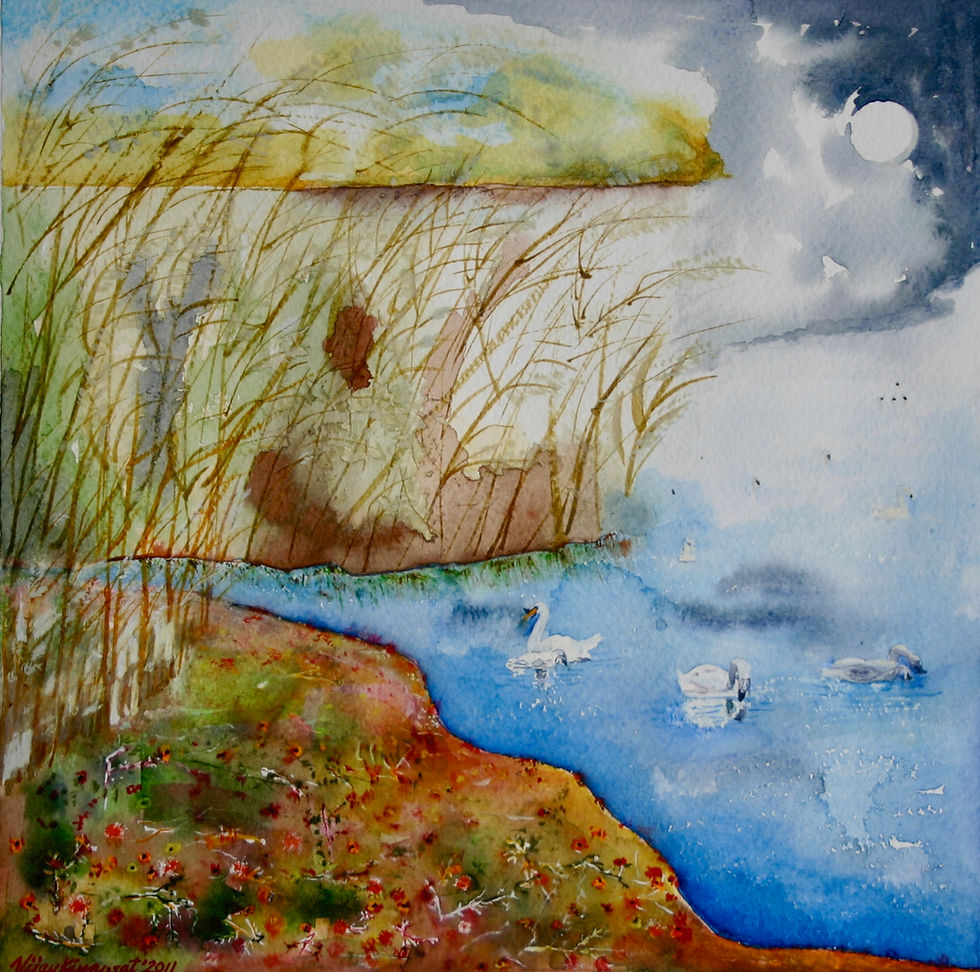Painting Stories-1 (Vasant Ritu-2)-Blog 10
- Websidezone .

- Jan 28, 2019
- 3 min read
Vasant Ritu-2
Watercolor on Waterford paper, 22″x30″

My painting Vasant Ritu-2 (वसंत ऋतु – २) is my all time favorite for more than one reason. Its theme, its composition, its execution, the feelings it evokes, and the enigma the lady radiates, all fascinate me a lot.
The painting is based on narrations in Shlok nos. 5, 6, and 16 in the description of Vasant Ritu (Spring Season-early March to early May) in ऋतु संहारम् (Ritu-Sanhaaram), the lyrical poem written some 1500 years ago by Kaalidaas in Sanskrit language. The relevant narrations of the Shlokas are:
Shlok 5: Women wearing sarees dyed with red flowers of कोसम (Schleichera Oleosa) tree. Actually the spring leaves-not the flowers-are red.
Shlok 6: The decorative कनेर (Nerium Oleander) flowers worn on the ears and अशोक (Saraca Indica) flowers in the black hair plaits of women look adorable.
Shlok 16: After intoxicating itself with the nectar of mango flowers, the male Asian Koel bird is kissing its sweetheart lustily.
In my series Ritu-Sanhaar, besides the narrations of Kaalidaas, I also portray my observations of nature including flowers, trees, birds, festivals and cultural activities in that season. Thus, the other flowers in the painting (my observations in spring season) are चंपा (Frangipani), अमलतास (Indian Laburnum), and गुलमोहर (Delonix Regia).
Another observation of mine portrayed in this painting is the festival of भक्ति उत्सव (Bhakti Utsav -the festival of spiritual music) that is held in the spring season in a park in Delhi. White threads tied to tree trunks and lit up from the bottom-in the backdrop of singers-render the spiritual ambience to the musical night.
Depiction of these threads was achieved by drawing masking fluid lines on the paper using oiler-boiler plastic bottle fitted with a syringe bought from Cheap Joe’s online store in the US. After the fluid had dried, I applied the paint to depict the night in dark color. The dried fluid lines were removed by rubbing with kneaded eraser after the paint had dried up fully. The white unpainted lines emerged beautifully, out of the black backgound.
Oiler Boiler bottles for applying masking fluid

Lost and found edges create intresting titillation for the viewer. Thus, not joining the elements and yet giving an indication of joining was adopted in this painting. Notice the break in the twig on which the pair of birds is perched. A continuous line would have been less interesting.
The black of the hair was obtained by mixing Burnt Sienna and Prussian Blue. Ivory black was not used as that would have imparted opacity to the black. It would have stared at the viewer. Darker hair was obtained by scorings done on paper using a toothpick while the paint was still wet, allowing the wet paint to sink in the grooves and darkening it from the rest of the area. The grey highlight was obtained by subtly removing some black color while still damp, with a tissue.
In terms of composition, I like the balance created by just the two birds on the right half of the painting even though most of this half is unpainted. That’s where my mentor and artist friend Manish Pushkale said “not painting is also painting”. The black of the male Asian Koel balances the black of the hair on the left. The patch of green around the birds pretty well balances the green foliage on the left.
Personally, I find in my all time favorite Vasant Ritu-2 very enigmatic, vibrant, cheerful, and mood uplifting painting.
If you would like to comment, please click on leave a comment tab on the top and write in the box that opens.
Please do circulate this blog among your artist friends and art connoisseurs.
This painting is in collection of Mrs. and Mr. Samat of Mumbai









Comments